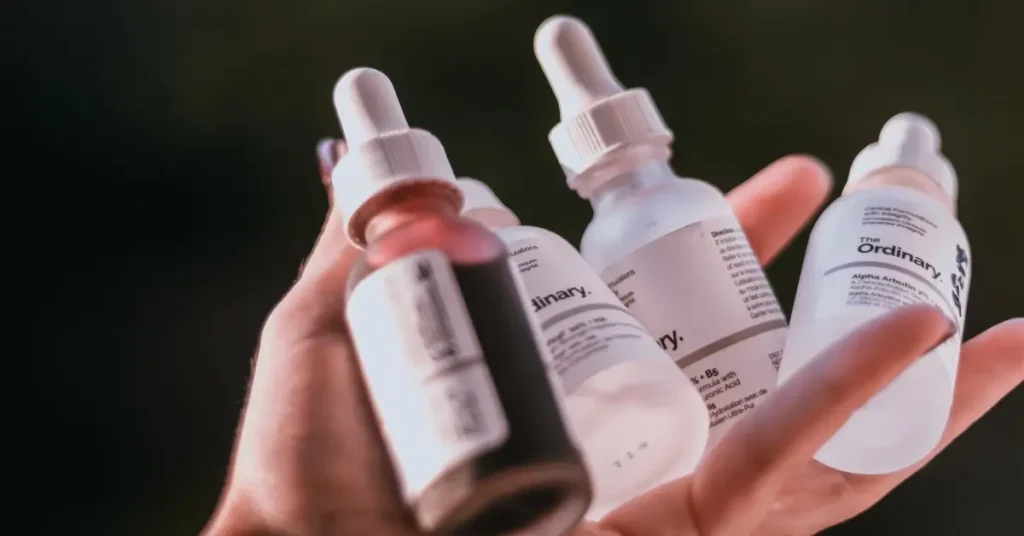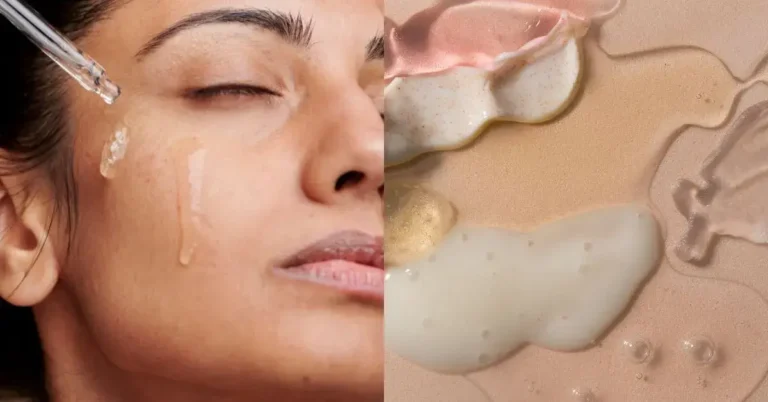Fed up with battling stubborn hyperpigmentation and in search of a genuinely effective remedy for your complexion? Trust me, I completely understand the challenge.
I’m sure you’ve asked yourself the question “Does Niacinamide Help With Hyperpigmentation?“. And I know, countless products promise the world but often fail to deliver, leaving us frustrated and discouraged. But fear not, I bring you a glimmer of hope and an extraordinary solution that could change your skincare routine forever!
Imagine a life where you no longer have to hide behind layers of makeup or avoid the spotlight because of uneven skin tone. Imagine having a complexion so radiant and flawless that it catches everyone’s eye and boosts your confidence to new heights. Well, that dream is well within your reach, thanks to the remarkable powers of niacinamide!
Table of Contents
Does Niacinamide Help With Hyperpigmentation?
Niacinamide has become a buzzword in the skincare industry and for a good reason. It’s a versatile ingredient that can help with a range of skin concerns, including acne, fine lines, and wrinkles.
But what I find most impressive about niacinamide is its ability to reduce hyperpigmentation, which is a common skin condition that affects people of all ages and skin types.
Hyperpigmentation is caused by an overproduction of melanin, the pigment that gives our skin its color. It can be triggered by various factors such as sun exposure, hormonal changes, and inflammation.
While there are many treatments available to reduce hyperpigmentation, niacinamide has been proven to be a safe and effective option. In this article, I will dive deeper into the benefits of niacinamide for hyperpigmentation and how you can incorporate it into your skincare routine.
Understanding Hyperpigmentation
As someone who has struggled with hyperpigmentation, I know how frustrating it can be to deal with dark patches of skin that just won’t go away. Hyperpigmentation is a common skin condition that causes areas of the skin to become darker than the surrounding skin. It can be caused by a variety of factors, including sun exposure, hormonal changes, and certain medications.
One of the most effective treatments for hyperpigmentation is niacinamide. Niacinamide is a form of vitamin B3 that has been shown to reduce the appearance of hyperpigmentation and even out skin tone. It works by inhibiting the transfer of melanin, the pigment that gives skin its color, from melanocytes to keratinocytes.
Hyperpigmentation can take many forms, including age spots, sun spots, and melasma. Age spots, also known as liver spots, are small, dark areas that typically appear on the face, hands, and arms as we age.
Sun spots, also known as solar lentigines, are caused by sun exposure and can appear anywhere on the body. Melasma is a type of hyperpigmentation that is caused by hormonal changes and is most commonly seen on the face.
While hyperpigmentation is not a serious medical condition, it can be a source of embarrassment and self-consciousness for many people. Fortunately, there are a number of treatments available that can help reduce the appearance of hyperpigmentation, including niacinamide. With the right treatment, you can achieve a more even, radiant complexion and feel more confident in your skin.
What is Niacinamide?
If you’re looking for a natural solution to hyperpigmentation, niacinamide is an ingredient you should definitely consider. Niacinamide, also known as vitamin B3, is a water-soluble vitamin that has been shown to have a range of benefits for the skin, including reducing the appearance of hyperpigmentation.
Niacinamide works by inhibiting the transfer of pigment to skin cells, which can help to reduce the appearance of dark spots and uneven skin tone. It also has anti-inflammatory properties, which can help to calm irritated skin and reduce redness.
One of the great things about niacinamide is that it is suitable for all skin types, including sensitive skin. It is also a very stable ingredient, which means it won’t break down easily in the presence of light or air.
Niacinamide can be found in various skincare products, including serums, moisturizers, and toners. It is generally safe to use in concentrations of up to 10%, although some products may contain higher concentrations.
If you’re looking for a natural way to reduce the appearance of hyperpigmentation, niacinamide is definitely an ingredient you should consider. It’s gentle, effective, and suitable for all skin types, making it a great choice for anyone looking to improve the appearance of their skin.
Niacinamide and Hyperpigmentation
Hyperpigmentation is a common skin concern that affects many people, including myself. It can be caused by a variety of factors, including sun exposure, hormonal changes, and inflammation. Fortunately, there are many treatments available to help reduce the appearance of hyperpigmentation, including niacinamide.
Effectiveness of Niacinamide
Niacinamide, also known as vitamin B3, is a powerful ingredient that can help improve the appearance of hyperpigmentation. It works by inhibiting the transfer of pigment to the skin’s surface, which can help reduce the appearance of dark spots and uneven skin tone.
Studies have shown that niacinamide can be effective in reducing hyperpigmentation caused by a variety of factors, including sun damage, acne, and inflammation. In fact, a study published in the Journal of Cosmetic Dermatology found that a topical niacinamide treatment was effective in reducing hyperpigmentation in 89% of participants.
Key 🔑 ingredients for hyperpigmentation;
— ً (@tufairies) June 12, 2022
1. Niacinamide
Ingredient that retains moisture, minimises pores & treats hyperpigmentation.
2. L-ascorbic acids
The purest, most potent and easily absorbed Vitamin C, help neutralise free radicals in the skin.
In my own personal experience, I have found that using a niacinamide serum has helped to reduce the appearance of my hyperpigmentation. I apply it twice a day after cleansing and before moisturizing and have noticed a significant improvement in my skin’s overall tone and texture.
If you’re considering using niacinamide to help improve the appearance of hyperpigmentation, it’s important to choose a high-quality product that contains a sufficient concentration of the ingredient. Look for products with a concentration of at least 5% niacinamide, and be sure to patch test before applying it to your entire face.
Benefits of Niacinamide

As someone who has struggled with hyperpigmentation, I can confidently say that niacinamide has been a game-changer for my skin. Not only has it helped reduce the appearance of dark spots, but it has also improved my skin’s overall texture and tone.
Niacinamide, also known as vitamin B3, is a versatile ingredient that offers a range of benefits for the skin. Here are just a few:
- Reduces hyperpigmentation: Niacinamide has been shown to inhibit the transfer of melanin, the pigment that gives skin its color, to the surface of the skin. This can help reduce the appearance of dark spots, sun damage, and other forms of hyperpigmentation.
- Improves skin barrier function: Niacinamide can help strengthen the skin’s natural barrier, which is essential for maintaining hydration and preventing moisture loss. This can help improve the overall health and appearance of the skin.
- Boosts collagen production: Collagen is a protein that gives skin its firmness and elasticity. Niacinamide has been shown to stimulate collagen production, which can help reduce the appearance of fine lines and wrinkles.
To maximize the benefits of niacinamide, I recommend using it in combination with other skin-loving ingredients like vitamin C and hyaluronic acid. A good way to do this is to look for products that contain multiple beneficial ingredients, like a serum or moisturizer.
Pro tip: When using niacinamide, it’s important to start slowly and build up gradually to avoid irritation. Start by using it once a day, and increase to twice daily as tolerated.
Overall, niacinamide is a powerful ingredient that can help improve the appearance and health of your skin. Give it a try and see for yourself!
How to Use: Step-by-Step

If you’re dealing with hyperpigmentation, niacinamide could be a game-changer. This powerful ingredient is known to brighten skin and reduce the appearance of dark spots, making it a popular choice for those looking to even out their skin tone. In this section, I’ll walk you through how to use niacinamide for hyperpigmentation, step-by-step.
Step 1: Choose the Right Product Before you start using niacinamide, it’s important to choose the right product. Look for a serum or moisturizer that contains at least 5% niacinamide. This concentration has been shown to be effective in improving hyperpigmentation.
Step 2: Cleanse Your Skin Before applying niacinamide, make sure your skin is clean. Use a gentle cleanser to remove any dirt, oil, or makeup from your face.
Step 3: Apply Niacinamide Once your skin is clean and dry, apply a small amount of niacinamide to your face. You can use your fingers or a cotton pad to apply the product. Be sure to cover your entire face, paying extra attention to areas with hyperpigmentation.
Step 4: Follow with Moisturizer After applying niacinamide, follow up with a moisturizer to lock in hydration and further enhance the benefits of the ingredient. Look for a moisturizer that is suitable for your skin type and doesn’t contain any harsh ingredients that could irritate your skin.
Pro Tip: To maximize the benefits of niacinamide, use it consistently. Incorporate it into your daily skincare routine and be patient
Potential Side Effects of Niacinamide
As with any supplement or medication, there is always the potential for side effects when using niacinamide. However, niacinamide is generally considered safe and well-tolerated by most people.
One of the most common side effects of niacinamide is flushing, which is a warm, tingling sensation in the skin. The dilation of blood vessels causes this and can be uncomfortable for some people. However, this side effect is usually mild and goes away on its own after a few minutes.
In rare cases, niacinamide can cause gastrointestinal problems, such as nausea, vomiting, and diarrhea. If you experience any of these symptoms, you should stop taking niacinamide and consult your doctor immediately.
Another potential side effect of niacinamide is hypotension, which is a sudden drop in blood pressure. This can cause dizziness, lightheadedness, and fainting. If you experience any of these symptoms, you should lie down and seek medical attention right away.
It is also worth noting that niacinamide can interact with certain medications, such as blood thinners and diabetes medications. If you are taking any prescription medications, you should talk to your doctor before taking niacinamide.
Overall, niacinamide is generally considered safe and well-tolerated by most people. However, as with any supplement or medication, it is important to be aware of the potential side effects and to consult your doctor if you experience any symptoms.
Alternatives to Niacinamide for Hyperpigmentation

Dealing with hyperpigmentation can be frustrating, especially when you’re not seeing any results. While niacinamide is a popular ingredient known for its ability to reduce hyperpigmentation, it’s not the only option out there. In fact, I’ve personally tried a few other products that have worked wonders for me.
One alternative to niacinamide is kojic acid. It’s a natural ingredient that’s derived from mushrooms and can be found in a variety of skincare products.
Kojic acid works by inhibiting the production of melanin, which is the pigment that causes hyperpigmentation. I’ve found that using a product with kojic acid twice a day has helped to fade my dark spots significantly.
Another option is azelaic acid, which is a dicarboxylic acid that’s naturally found in grains like wheat, barley, and rye. Azelaic acid has been shown to be effective in reducing hyperpigmentation by inhibiting the activity of tyrosinase, an enzyme involved in the production of melanin. I’ve used a product with azelaic acid in the past and noticed a significant improvement in my skin’s overall texture and tone.
If you’re looking for a non-acidic alternative, consider trying licorice root extract. It’s a natural ingredient that’s been used for centuries in traditional medicine. Licorice root extract contains a compound called glabridin, which has been shown to have skin-lightening properties. I’ve found that using a product with licorice root extract has helped to reduce the appearance of my dark spots over time.
If you’re interested in learning more about hyperpigmentation and how to treat it, check out these external resources: Medical News Today, Dermatology Times, and Beautiful with Brains.
Does Niacinamide Help with Hyperpigmentation?

Are you tired of dealing with dark spots and uneven skin tone caused by hyperpigmentation? If so, you may be interested in trying niacinamide, a form of vitamin B3 that has been shown to effectively lighten the skin and reduce the appearance of dark spots and blemishes.
Niacinamide works by inhibiting the transfer of melanin, the pigment that gives our skin color, from melanocytes to keratinocytes. This helps to reduce the amount of melanin in the skin, resulting in a brighter, more even complexion.
Benefits and Potential Side Effects
Before trying niacinamide, it’s important to understand the potential benefits and side effects. Here’s a quick summary:
| Benefits | Potential Side Effects |
|---|---|
| Reduces hyperpigmentation and dark spots | May cause mild irritation or redness |
| Improves skin texture and tone | May not work for everyone |
| Boosts hydration |
My Personal Experience
As someone who has struggled with hyperpigmentation for years, I was excited to try niacinamide for myself. After incorporating a niacinamide serum into my daily skincare routine, I noticed a significant improvement in the overall brightness and evenness of my skin tone. My dark spots were noticeably lighter, and my skin looked smoother and more hydrated.
While I did experience some mild irritation and redness when I first started using niacinamide, these side effects subsided after a few days. Overall, I’m thrilled with the results and would highly recommend niacinamide to anyone dealing with hyperpigmentation.
FAQ

Does niacinamide reduce hyperpigmentation?
Yes, niacinamide can help reduce hyperpigmentation. It inhibits the transfer of melanin to skin cells, leading to a more even skin tone and a reduction in the appearance of dark spots and discoloration.
Does niacinamide fade dark marks?
Yes, niacinamide can help fade dark marks and post-inflammatory hyperpigmentation. Its ability to regulate melanin production and improve skin barrier function aids in reducing the appearance of dark spots, leading to a more even complexion over time.
Can I use niacinamide everyday?
Yes, niacinamide is generally safe for daily use. It is well-tolerated by most skin types and can be incorporated into your skincare routine morning and/or evening to enjoy its full benefits in improving skin texture, tone, and overall health.
What happens if you use too much niacinamide on skin?
Using too much niacinamide on the skin can cause irritation, redness, and potential inflammation. It’s essential to follow recommended concentrations and usage guidelines to avoid adverse reactions and consult a dermatologist if any concerns arise.
Do you need sunscreen with niacinamide?
Yes, it is essential to use sunscreen when using niacinamide, as it makes the skin more sensitive to sunlight. Sunscreen protects the skin from harmful UV rays, prevents further hyperpigmentation, and maximizes the benefits of niacinamide in achieving a healthy complexion.
If you liked this blog article about the question: “Does Niacinamide Help With Hyperpigmentation in 2023?”, don’t forget to leave us a comment down below to tell us about your experience.





